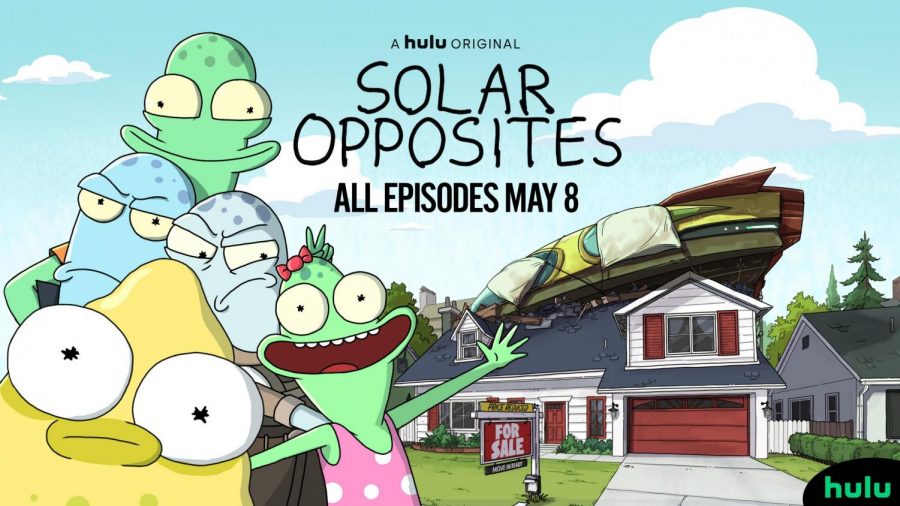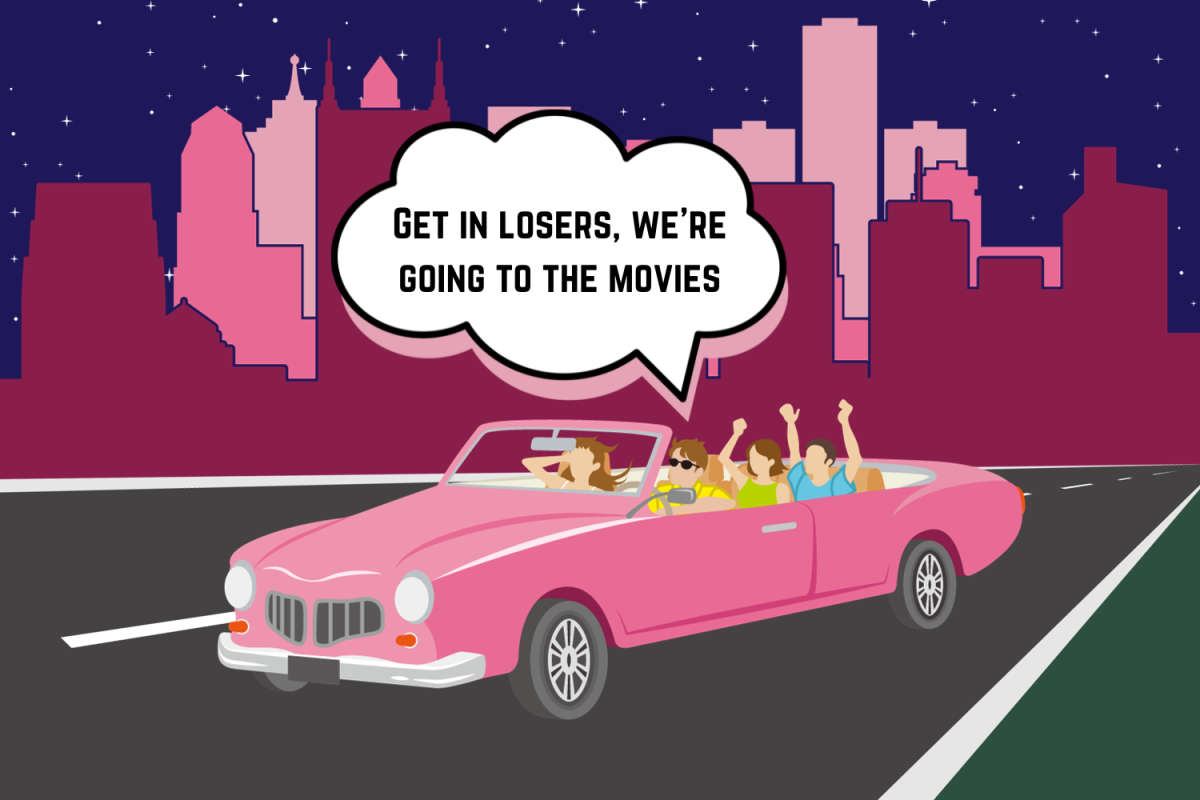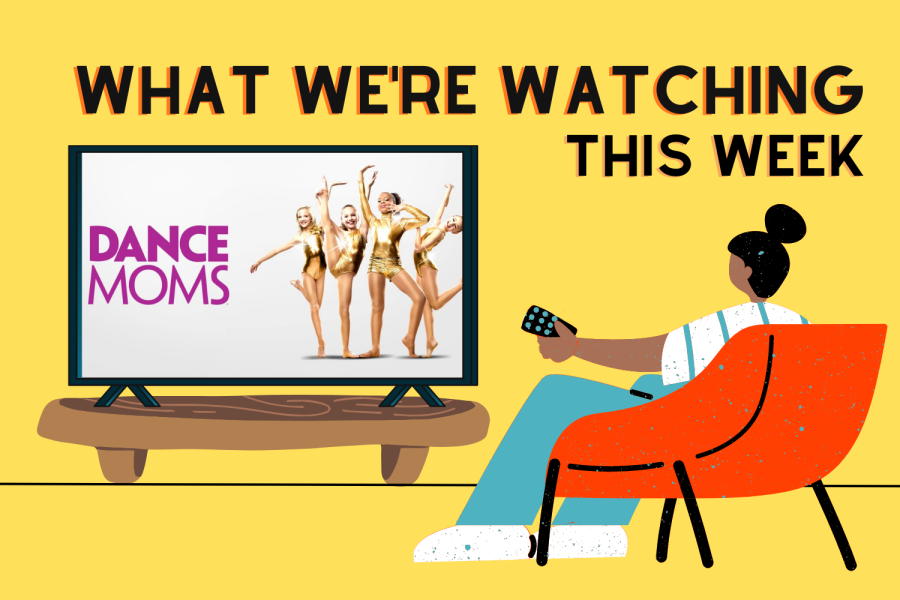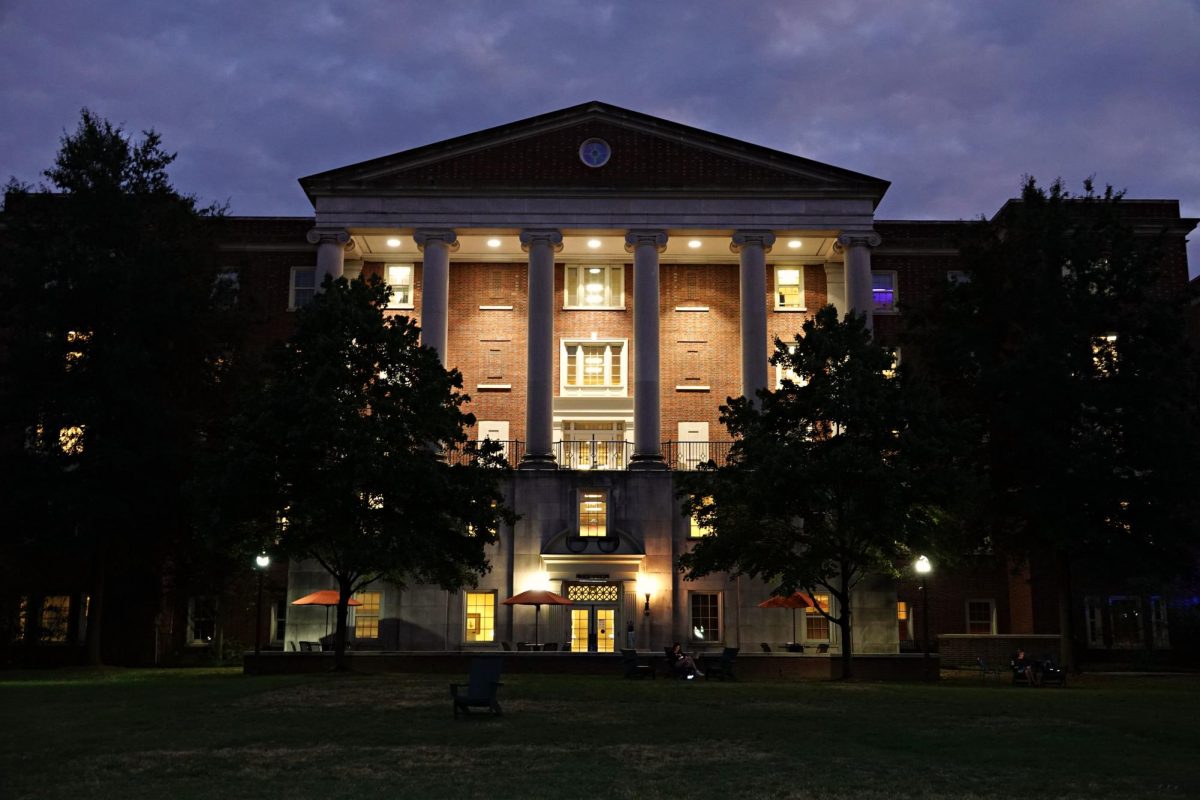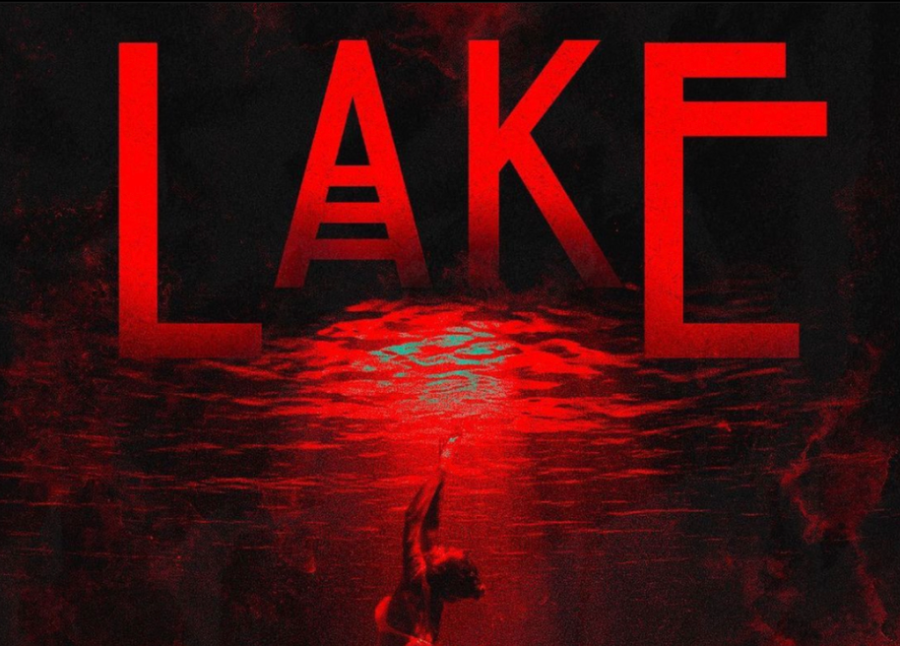Consider what it means in Internet culture when a meme becomes “deep-fried.”
Someone’s turned the saturation way up and added a caption with a ridiculous number of laughing emojis. There’s a few sound effects (probably stock ones from iMovie) that have been edited over the original audio. Maybe it’s even been shared on Facebook and then screenshotted and re-uploaded to Instagram, but whoever posted it forgot to crop out the Facebook header and the header of the original person who tweeted it. The cycle continues.
Hulu’s new animated series “Solar Opposites,” released on May 8, essentially embodies this concept: a deep-fried version of a typical dysfunctional family animated sitcom like “The Simpsons” or “Bob’s Burgers.” The new sci-fi show focuses on a group of aliens who fled their home planet after a meteor catastrophe and crashed into a suburban home on Earth. Each episode follows the wacky exploits of scientific partners Korvo and Terry and their “replicants” (a.k.a. children) Yumyulack and Jesse as they struggle to fit into human society.
It’s a tall order, an interesting concept that seems like a recipe for a great animated series—if done well. And it comes from producer Justin Roiland, co-creator of “Rick and Morty,” so Hulu subscribers anticipating the show’s release had high hopes.
This confidence led both to many successes and to the show’s ultimately ironic failure.
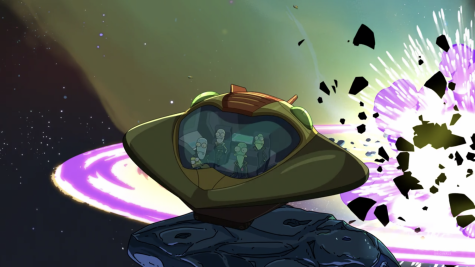
Like “Rick and Morty,” “Solar Opposites” has its charming moments. Its characters embark on familiar story arcs with new twists, bringing a refreshing change of pace to the seemingly dried-out sitcom genre. For example, the replicants Yumyulack and Jesse often find themselves dealing with typical high school problems like bullies and party invitations as they attempt to maneuver tricky teenage social situations, but their access to a wide variety of sci-fi gadgets allows their respective character arcs to end in satisfyingly unexpected ways.
The show also employs many unconventional methods to create a sense of twisted lovability in their characters, my personal favorite being the running gag of Terry’s shirts. In each episode, he wears a shirt with a different hilariously bad catchphrase like something you’d see trending on Redbubble, such as “17’5 4 7R4P” (it’s a trap) or “got dilf?” Terry’s laidback attitude delightfully clashes with Korvo’s no-nonsense professionalism in a classic archetypal character-foil scenario, making the found-family dynamic as enjoyable as ever. There’s even a weird cuteness to their character designs that makes you think, I’d be that guy’s friend for sure.
Perhaps the show’s most unique aspect comes in episode 7, “Terry and Korvo Steal a Bear.” Surprisingly (and yet also unsurprisingly, knowing what we do about Roiland’s tendency to subvert expectations), Terry and Korvo have almost no screen time in this episode. Instead, it focuses on a subplot that’s been slowly boiling over throughout the previous episodes: the story of the Wall.
[minor spoilers ahead]
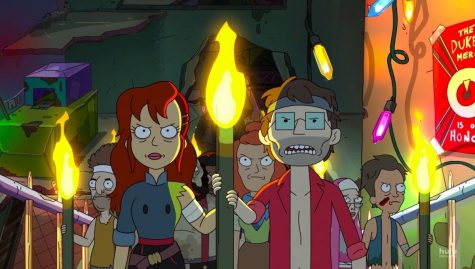
Early on in the season, it’s revealed that Yumyulack and Jesse own a shrink ray, which they use to shrink down humans that anger or annoy them, placing said humans in a set of interlocking terrariums that form one wall of their bedroom. Over the course of the first six episodes, the population of the Wall grows, and we get glimpses of the rapidly escalating political turmoil among the Wall’s inhabitants as their ruler, known as The Duke, becomes more and more tyrannical.
Similar to fan-favorite “Rick and Morty” episode “Tales from the Citadel,” episode 7 tells the kitschy story of a revolution within the Wall, with a number of clever new interpretations of tropes familiar to the genre, all in miniature. The whole episode is truly a testament to the creative genius of Roiland and co-creator Mike McMahan.
“Solar Opposites” seems to have it all: a unique concept in a genre that’s been squeezed dry, witty, unexpected humor and charming, lovable characters. If this formula worked for Roiland with “Rick and Morty,” why didn’t it work again?
The answer is cruelly ironic. Because of the successes of Roiland’s previous genre-defying show, “Solar Opposites” becomes overconfident and hyperactive in its shadow. To return to my earlier metaphor, it feels annoyingly deep-fried, a hodgepodge composite image of multiple clashing processes and foundational elements.
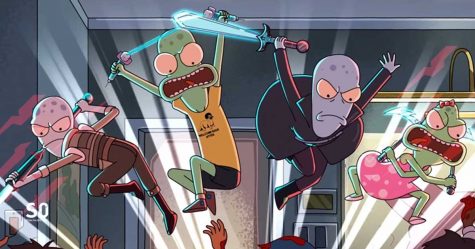
Korvo and Terry’s dialogues may be witty, but they’re delivered in a fashion designed to be quick and sharp, which ends up feeling frantic, confusing and overworked. Simply put, they talk way too fast, and they never shut up. Many of their throwaway cultural references lose their impact when they’re immediately followed by two or three more in rapid succession. Every conversation leaves you drained, regardless of the humorous content.
The twists on genre tropes are subversive and unique, yes, but “Solar Opposites” is proof that there can be too much of a good thing. A single episode resembles what might happen if someone compressed an entire season of “Futurama” into twenty minutes: the sci-fi is cool, but there’s too much of it all at once. Whatever messages of humanity and familial bonding might lie hidden in each crazy story arc are lost beneath layers and layers of ironic hijinks for irony’s sake. The show’s overconfidence destroys it and makes viewing even one episode an overwhelming, draining experience.
But hey, I watched them all. There’s just something about Terry and Korvo’s ear-to-ear grins (even though they don’t have ears) that I couldn’t resist, and maybe they’ll suck you in, too. Just don’t watch too many episodes in one sitting. Your eyes and ears will thank you.

